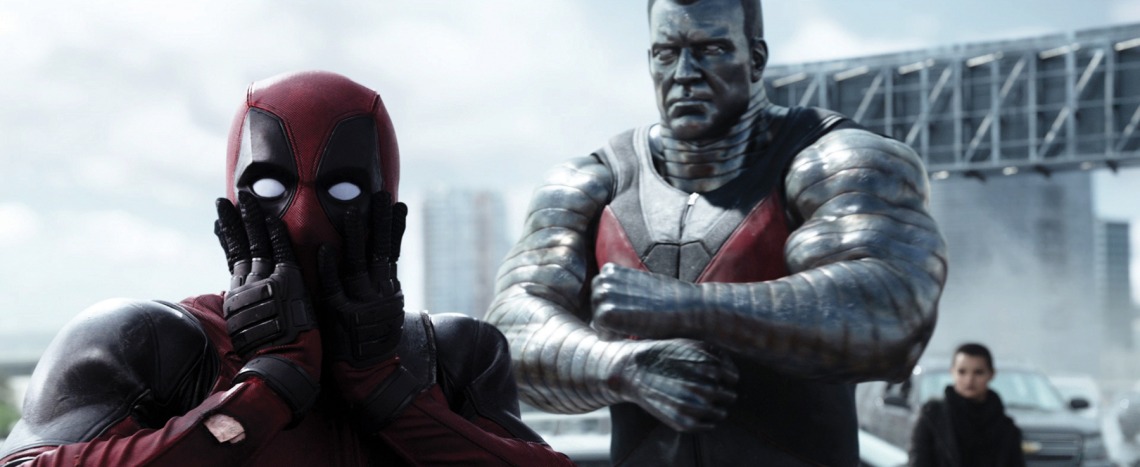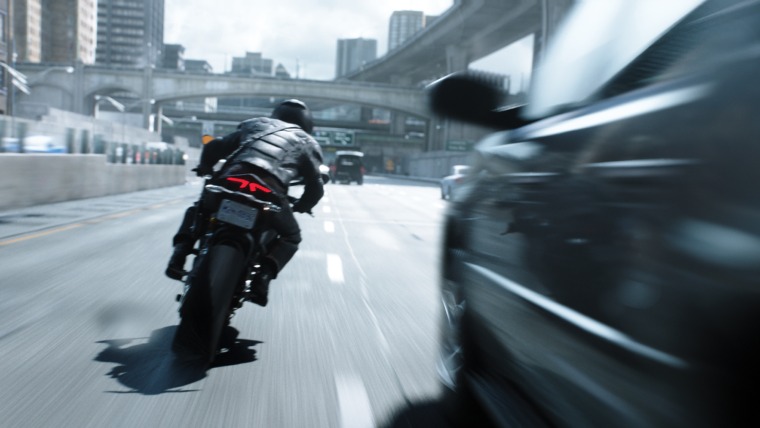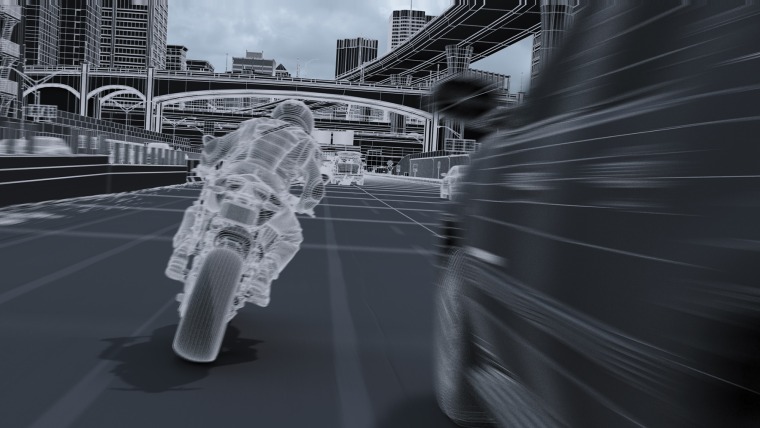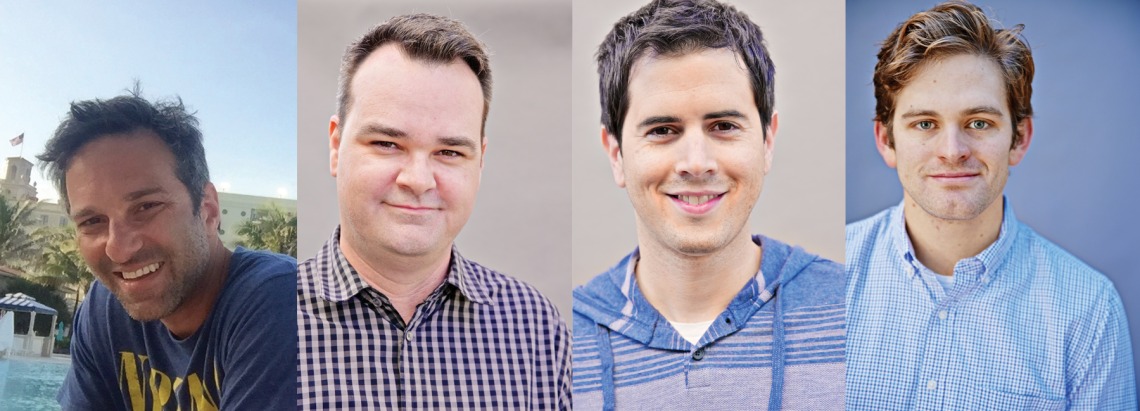VFX Special Effects

Jonathan Rothbart ’94 spends his days in a movie dreamworld filled with fearsome giants, planet-hopping spacecraft and super-powered heroes. It’s a place where buildings vanish with the click of a mouse, real penguins hobnob alongside their computer-generated kin and the laws of gravity don’t always apply.
Most of us visit this world, but its citizens are the legion of technicians who tweak reality for the movies we watch.
The visual special effects — or VFX — industry has drawn Rothbart and many other UA alumni from the School of Theatre, Film and Television in the College of Fine Arts.
For the past decade, students and alumni have benefited from the professional development opportunities offered by the college’s Jack and Vivian Hanson Film Institute.
Despite long hours and brutal deadlines, they love what they do.
“To me, it is just fun,” says Rothbart, a VFX supervisor at 20th Century Fox. “I feel like a kid most of the time.”
Rothbart, an English major, began hanging out at the UA’s Media Arts Center his senior year. “I just started learning how to use the tools,” he says. “There were not really any classes for it then, so I picked it up it on my own.” He has worked on technically advanced films including “Blade Runner,” “Iron Man” and “Avatar.”
Another of his credits is the Marvel comic-based film “Deadpool,” where he oversaw a junkyard battle between a character called Angeldust (played by a small woman) and a computer-generated giant named Colossus.
The challenge was to make the brawl realistic.
“In some scenes, we used a 6-foot-7-inch actor to stand in for Colossus,” Rothbart says, “and we gave him huge elevator shoes. But he couldn’t use the shoes in the fight scene, so instead we put him on a little riser.”
Bringing it all together involved painstaking coordination between the director, the actors and the special-effects companies hired to flesh out Colossus. “My job is creative, technical and managerial,” Rothbart says. “I start with helping the director develop how a scene should look, then I work with the rest of the departments to see how we’re going to get it done.”
Also at 20th Century Fox is VFX producer Scott Puckett ’99, whose long list of credits includes “The Day the Earth Stood Still,” “Mr. Popper’s Penguins” and “Maze Runner: The Death Cure.”

Computer technology now lets filmmakers create entire digital scenes, like this motorcycle chase scene from the movie “Deadpool.” Images courtesy of 20th Century Fox.

Computer technology now lets filmmakers create entire digital scenes, like this motorcycle chase scene from the movie “Deadpool.” Images courtesy of 20th Century Fox.
“The most amazing thing to me is the eye of the audience,” Puckett says. “When you talk to people about special effects, even if they’re not avid movie or tech fans, people inherently know when something looks real and when something doesn’t. That’s always the most fascinating thing to me.
“The audience either goes along for the ride or they don’t,” he says. “But at the end of the day, it’s all illusion. Twenty-four frames per second, individual images that flash past the eye, and you can do anything you want with any of those individual frames. And that applied long before computers. Visual effects are just an extension of the technology.”
Even casual movie buffs are aware of the evolution of big-screen special effects. Consider “King Kong,” the 1933 classic featuring a giant ape thundering through New York. What we’re really seeing is a series of stop-action shots, where an ape model is moved slightly from one frame to the next.
Stanley Kubrick’s “2001: A Space Odyssey,” released in 1968, used miniatures and hand-drawn rotoscopes to simulate objects in outer space. In 1977, “Star Wars” unveiled a universe of special effects, including the precise use of models and miniatures.
The first fully computer-generated scenes appeared in the 1980s, in films like “Tron” and “Star Trek 2: The Wrath of Khan.” In 1990, “Total Recall” was the first to use motion capture technology, in which the movements of live actors are incorporated into a computer-generated character.
Today, it’s practically impossible to discern live actors from their computer-generated counterparts, and fantastic creatures are so lifelike that slipping into the synthesized world of cinema has become easier than ever.
In the upcoming “War for the Planet of the Apes,” the movements of human actors are directly translated to computer-generated apes. The result is an astonishing realism — and a point of pride for Sheldon Smith ’09.
Smith was working on the film as a VFX coordinator when we reached him by phone in Vancouver. His responsibilities range from going through storyboards and scripts to taking notes on the shooting. Later, he helps determine which shots are ready to be farmed out to the computer production houses; when they come back, he submits them to the director for approval.
College of Fine Art’s Jack and Vivian Hanson Arizona Film Institute Internships
Like many UA alumni in the industry, Smith got a career boost from the Hanson Film Institute — and some lucky timing. While studying media arts, he had an institute internship that was established by John Kilkenny ’09, president of special effects at 20th Century Fox and a member of the institute’s Industry Council.
“I got assigned to ‘Gulliver’s Travels,’” Smith says. “It was a good movie, but post-production was extremely long. My internship was for six months, which is usually almost the entire run of post-production. Because it went on so long, I was hired as a production assistant.

From left: Jonathan Rothbart, Scott Puckett, Scott Aaron Silver and Sheldon Smith
By the end, I was assistant coordinator. I went up two levels in just 18 months.”
Several years later, his favorite VFX experience has been “The Life of Pi,” where actors worked against a blank green backdrop. “It was just a boy in a boat,” Smith says. The backdrop was later turned into a rolling ocean. “It’s always exciting,” he says, “when we get the work back and it just amazes us.”
Helping alumni get a positive career start is one of the primary focuses of the Hanson Film Institute, which opened in 2004. “We provide programing that supplements their degrees, and we work in partnership with the film and television programs to help them get jobs,” says Vicky Westover, the institute’s director.
Wildcats already working in the movies are thrilled to be contacted. “They say, ‘Thank you so much for calling me,’” she says. “I ask them if they want to come back to be on a panel or speak to a class. I also ask if they could offer an internship.”
Scott Aaron Silver ’09, who recently connected with Rothbart on the set of “Deadpool,” also got his start through an internship arranged by the institute.
A visual effects production supervisor with 20th Century Fox, Silver’s credits include “X-Men: Days of Future Past” and “The Maze Runner.”
He currently is in Hawaii working on the adventure film “Jumanji.” He preps shots for visual effects, puts effects out for bid and monitors effects every step of the way. “For example, ‘Deadpool’ had 1,200 different shots,” he says. “You have track every single shot to make sure it gets done and approved by all the proper people. It can get pretty tight, but it’s fun.”
Another Wildcat happy to be hard at work making dreams come to life.
